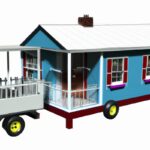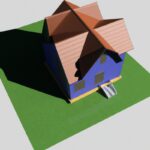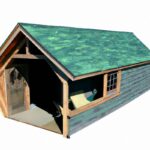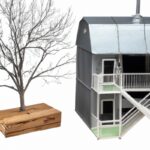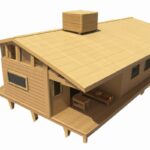Key Takeaways:
- Efficient space planning is crucial when building a tiny house on a budget.
- Using recycled and repurposed materials can significantly reduce costs.
- Simple DIY construction techniques can help save money when building a tiny house.
- Prioritizing essential features and compromising on luxury can keep the budget low.
Have you ever dreamt of living in a cozy and compact space that perfectly encompasses your needs? Well, you’re in luck! In this blog article, I’m going to share with you the secrets of building a tiny house on a budget.
From understanding the concept of tiny houses to finalizing your dream home, I’ve got you covered.
We’ll explore the advantages of living in a tiny house, how to plan and design your space, where to find affordable materials and tools, and the step-by-step process of construction. So, let’s dive in and turn your dream of a budget-friendly tiny house into a reality!
Task |
Description |
Research |
Research and gather information on building a tiny house on a budget. |
Design |
Create a design plan for your tiny house, keeping in mind budget constraints. |
Materials |
Source and purchase affordable materials needed for construction. |
Construction |
Start building according to the design plan, seeking help from friends or family if necessary. |
Utilities |
Install necessary utilities such as plumbing and electrical systems, using cost-effective solutions. |
Interior |
Carry out interior decoration using affordable furniture and storage options. |
Finishing Touches |
Add finishing touches to make your tiny house functional and aesthetically pleasing. |
Inspection |
Get necessary inspections done to ensure safety and code compliance. |
Move-in |
Clean and prepare your tiny house for living, move in and enjoy your new home. |
Maintenance |
Regularly maintain and take care of your tiny house to ensure longevity. |
Understanding the Concept of Tiny Houses
What is a Tiny House?
A tiny house is a small, compact dwelling that is typically under 400 square feet in size. It is designed to maximize space and minimize unnecessary features, focusing on functionality and simplicity instead.
Tiny houses can be built on wheels for easy mobility or placed on a foundation.
They offer an affordable and sustainable living option, with less maintenance and lower utility costs. Despite their small size, tiny houses can still provide all the necessary amenities and comforts of a conventional home, making them a popular choice for minimalistic living.
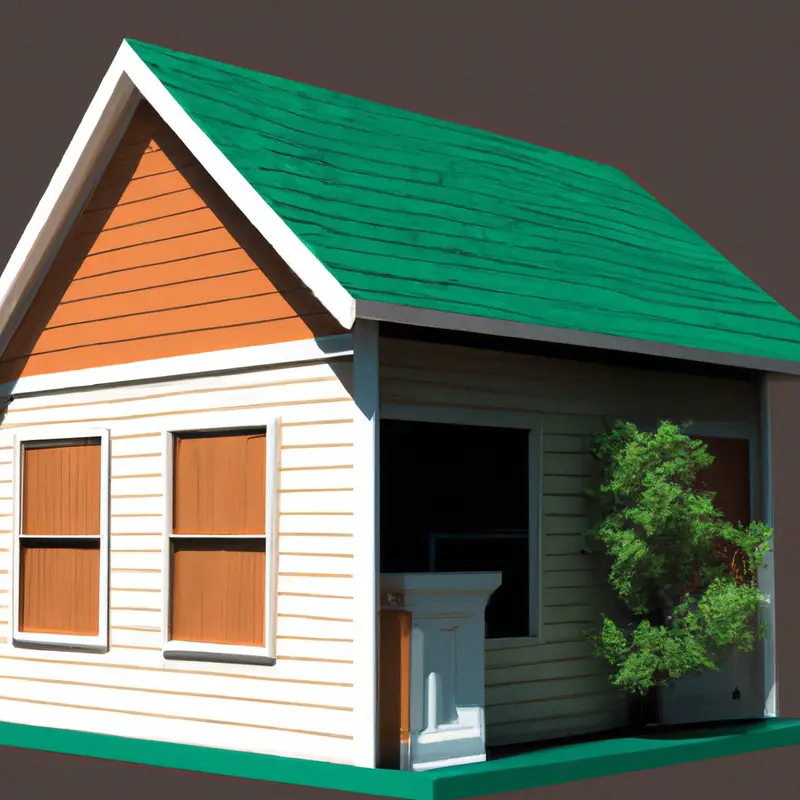
Advantages of Living in a Tiny House
Living in a tiny house has numerous advantages. Firstly, it allows for financial freedom as the cost of building and maintaining a tiny house is significantly lower than a traditional home.
Secondly, it promotes a minimalist lifestyle by forcing you to prioritize what is truly important and let go of unnecessary possessions.
Thirdly, it is environmentally friendly, requiring less energy and resources to build and operate. Additionally, tiny houses promote a sense of community and are highly mobile, allowing you to travel and experience different places easily.
Lastly, living in a tiny house encourages creativity in maximizing space and designing unique interiors.
Planning and Designing Your Tiny House
Setting a Realistic Budget
Setting a realistic budget is essential when building a tiny house. Here are some tips to help you with it:
- Determine your total budget: Calculate how much you can afford to spend on your tiny house project.
- Break down costs: Divide your budget into categories such as materials, labor, permits, and utilities.
- Research prices: Research and compare prices for materials and tools to find the best deals.
- Consider DIY options: DIY can help save money on labor costs if you have the skills and time.
- Explore second-hand materials: Look for recycled or second-hand materials to cut down on expenses.
- Plan for unexpected costs: Set aside a buffer fund for any unexpected expenses that may arise during the construction process.
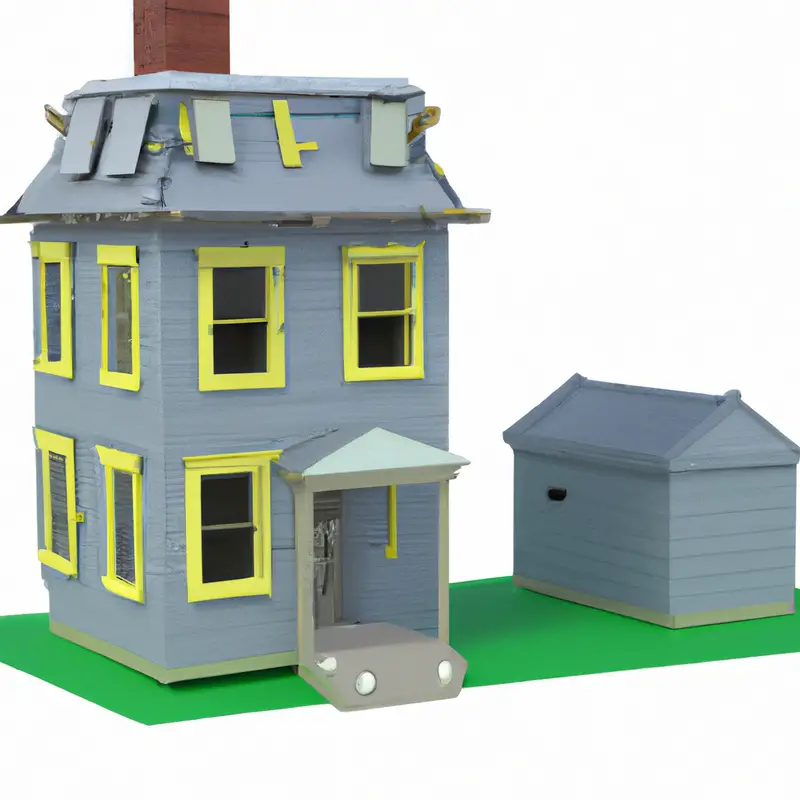
Choosing the Right Location
Choosing the right location for your tiny house is a key decision in the building process.
Here are a few factors to consider:
- Zoning regulations: Check local zoning laws to ensure that you are allowed to have a tiny house on the chosen property.
- Accessibility: Consider the proximity to amenities such as grocery stores, healthcare facilities, and schools.
- Utilities: Determine if the location has access to water, electricity, and sewage connections or if you’ll need to explore off-grid options.
- Climate: Take into account the climate of the area and consider insulation and heating/cooling requirements.
- Privacy and views: Think about your personal preferences for privacy and any scenic views you might desire.
Remember to do thorough research and visit potential locations before making a final decision.
Choosing the right location will greatly impact your overall tiny house living experience.
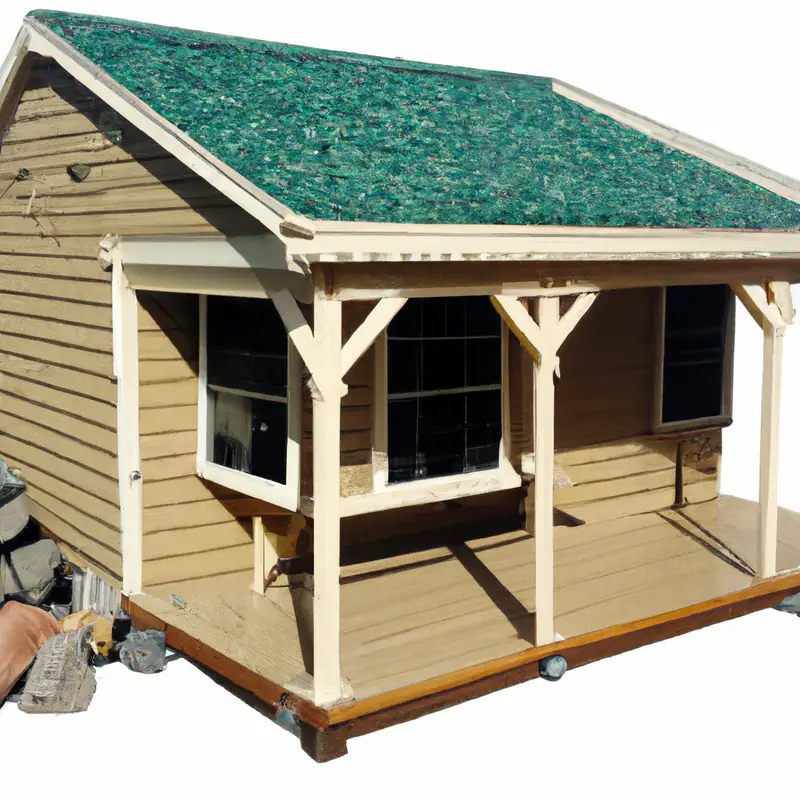
Making a Layout and Design Plan
To make a layout and design plan for your tiny house, start by assessing your needs and priorities.
Consider the number of rooms, storage space, and any specific features you want.
Sketch out the floor plan, including the placement of walls, windows, and doors.
Think about flow and functionality to make the most of your limited space.
Take inspiration from existing tiny house designs but customize it to suit your preferences.
Don’t forget to consider any legal requirements or building codes that may apply in your area.
Determining the Size and Style of the Tiny House
Determining the Size and Style of the Tiny House can be a fun and exciting process. It’s important to consider your lifestyle and needs when deciding on the size.
Ask yourself questions like how many people will be living in the house and what activities will take place inside.
As for the style, think about the overall aesthetic you prefer – modern, rustic, minimalist, etc. Research different designs and layouts to find inspiration and narrow down your choices.
Keep in mind that the size and style should complement each other to create a functional and visually appealing tiny house.
Sourcing Affordable Materials and Tools
Researching and Comparing Material Prices
Researching and comparing material prices is essential when building a tiny house on a budget. Here are a few tips to help you with this process:
- Start by making a list of all the materials you will need for your project, including lumber, insulation, roofing, and flooring.
- Look for local suppliers or hardware stores that specialize in construction materials. Visit their websites or call them for price information.
- Consider exploring online marketplaces and classified ads where individuals and businesses sell new or used building materials at discounted prices.
- Don’t forget to check out any local salvage or recycling centers that may have affordable or second-hand materials available.
- Keep track of the prices you find and compare them to ensure you’re getting the best deal.
By researching and comparing material prices, you can find cost-effective options for your tiny house construction. Happy hunting!
Exploring DIY Options or Hiring Professionals
When it comes to building a tiny house on a budget, exploring DIY options can be a cost-effective approach. If you have the necessary skills and knowledge, you can save money by doing the construction work yourself.
DIY allows you to have full control over the design and build process, and it can be a rewarding experience.
On the other hand, hiring professionals is a viable option if you lack the time, skills, or confidence to handle the project yourself. Professionals can provide expertise and ensure a higher quality build.
Consider your abilities, time constraints, and budget when deciding between DIY and professional help.
Finding Second-hand or Recycled Materials
When it comes to sourcing materials for your tiny house on a budget, finding second-hand or recycled materials can be a great option. Not only can it save you money, but it also helps reduce waste and gives new life to old items.
Here are a few ways you can find these materials:
- Online marketplaces: Websites such as Craigslist, Facebook Marketplace, and Freecycle offer a wide range of used building materials for sale or even for free. You can search for items like windows, doors, flooring, and more.
- Habitat for Humanity ReStores: These nonprofit home improvement stores sell new and gently used furniture, appliances, and building materials donated by individuals and businesses. Shopping at ReStores supports a good cause while finding affordable materials.
- Salvage yards: Local salvage yards often have a variety of reclaimed materials from demolished buildings. You can find items like lumber, bricks, roofing materials, and fixtures at a fraction of the cost of new ones.
- Demolition sites: If there’s a construction project happening nearby, you may be able to salvage materials that would otherwise be thrown away. Talk to the project manager and ask if you can take some of the items they are discarding.
Remember to inspect the materials carefully, ensuring they are in good condition and suitable for your needs. By incorporating second-hand or recycled materials into your tiny house construction, you can save money and add a unique touch of character to your home.
Tools and Equipment Needed for Building
To build a tiny house, you’ll need a few essential tools and equipment.
Here are some items you’ll need for the construction process:
- Measuring tape and level for accurate measurements and alignment.
- Power tools such as a circular saw, drill, and impact driver for cutting and fastening.
- Hand tools like hammers, screwdrivers, and wrenches for manual tasks.
- Safety equipment including goggles, gloves, and a dust mask to protect yourself.
- Ladders and scaffolding for reaching higher areas safely.
Remember to gather these tools before starting your project to ensure a smooth building process.
Constructing the Tiny House
Foundation and Flooring Options
When building a tiny house on a budget, there are several foundation and flooring options you can consider.
For the foundation, you can opt for a concrete slab, which is affordable and provides a sturdy base.
Another option is using concrete blocks or pier supports, which are also cost-effective.
As for the flooring, you can choose from materials like laminate, vinyl, or reclaimed wood, which are more affordable than traditional hardwood.
Another budget-friendly option is using plywood or subflooring and adding a durable finish.
It’s important to consider your budget and the specific needs of your tiny house when selecting these options.
Framing and Insulation Techniques
When it comes to framing and insulation techniques for your tiny house, there are a few key things to keep in mind. Firstly, framing is important as it provides the structural integrity of your home.
You can choose between wood or metal studs for the framing, depending on your preference and budget.
Secondly, insulation is crucial for temperature control and energy efficiency. Consider using spray foam insulation or eco-friendly insulation materials like recycled denim or sheep’s wool.
By properly framing and insulating your tiny house, you can create a comfortable and sustainable living space.
Electrical and Plumbing Installation
During the construction of your tiny house, one important aspect to consider is the electrical and plumbing installation. This step involves installing all necessary wiring, outlets, switches, and plumbing fixtures.
It’s crucial to plan the placement of these elements carefully to ensure functionality and efficiency.
Hiring a professional electrician and plumber is recommended to ensure compliance with safety standards. Additionally, choosing energy-efficient fixtures and appliances will help minimize power usage and water consumption, making your tiny house more environmentally friendly.
Roofing and Exterior Finishing
In order to complete the construction of your tiny house, you will need to focus on roofing and exterior finishing.
For the roof, you have several options such as metal panels, asphalt shingles, or even a green roof with plants.
Consider the climate and aesthetics when choosing.
When it comes to exterior finishing, you can use siding, paint, or even natural materials like wood or stone.
Take into account durability and maintenance requirements.
Make sure to ensure proper insulation and weatherproofing for a cozy and well-protected tiny home.
Furnishing and Interior Design
Space-saving Furniture and Storage Solutions
When it comes to furnishing your tiny house, maximizing space is a crucial aspect.
Here are some space-saving furniture and storage solutions to consider:
- Multi-functional furniture: Choose items that serve multiple purposes, such as a sofa that can be converted into a bed or a coffee table with hidden storage compartments.
- Wall-mounted shelves and hooks: Utilize vertical space by installing shelves and hooks on the walls. This allows you to free up floor space and keep items organized.
- Foldable and collapsible furniture: Opt for collapsible tables, chairs, and even beds that can be folded away when not in use. This way, you can easily create more open space when needed.
- Built-in storage: Incorporate storage solutions into the design of your tiny house, such as built-in cabinets, drawers, and shelves. These can maximize storage capacity without taking up additional space.
- Hanging organizers and baskets: Hang organizers and baskets inside closets or on doors to store smaller items like accessories, cleaning supplies, or kitchen utensils.
Remember, every inch of your tiny house counts, so be thoughtful about the furniture and storage solutions you choose to optimize your space.
Maximizing Natural Light and Ventilation
Maximizing natural light and ventilation in your tiny house is essential for creating a bright and airy space.
Here are some tips to achieve this:
- Large Windows: Install windows strategically to allow ample sunlight into your tiny house. Consider using energy-efficient windows with customizable features.
- Skylights: Adding skylights can bring in additional natural light and give the illusion of a bigger space. Make sure to choose skylights that can be opened to improve ventilation.
- Light-colored Walls: Paint your interior walls with light colors to enhance the natural light reflection and create a more spacious feel.
- Open Floor Plan: Opt for an open floor plan layout to allow for better air circulation. This will promote cross ventilation and keep your tiny house cool.
- Ceiling Fans: Install ceiling fans to improve air circulation and keep the temperature comfortable.
Remember, maximizing natural light and ventilation not only enhances the aesthetics of your tiny house but also contributes to your overall well-being and comfort.
Choosing Energy-efficient Appliances
Choosing energy-efficient appliances is a key consideration when building a tiny house on a budget.
Energy-efficient appliances can save you money on utility bills in the long run while reducing environmental impact.
Look for appliances with high Energy Star ratings, which indicate energy efficiency.
Consider the size and capacity of each appliance to ensure it meets your needs without excess energy usage.
Opt for appliances with advanced features such as programmable settings and smart technology that allow for further energy conservation.
Lastly, compare prices and read reviews to find the best energy-efficient appliances that fit your budget and needs.
Decorating on a Budget
Decorating on a budget for your tiny house can be fun and creative. Here are some tips to help you save money while still achieving a stylish look:
- Thrift stores and flea markets: Look for unique furniture and decor pieces at affordable prices. You might discover some hidden gems that fit perfectly with your style.
- DIY projects: Get creative and make your own decorations. Pinterest and YouTube have tons of DIY ideas that are budget-friendly and easy to follow.
- Repurpose and upcycle: Give new life to old items by repurposing them. For example, you can turn an old ladder into a bookshelf or use mason jars as storage containers.
- Use paint: A fresh coat of paint can transform any space. Consider painting furniture or walls to give them a new look without breaking the bank.
- Opt for minimalism: Keep your decor simple and minimal. It not only looks modern but also saves money since you won’t need to buy as many items.
Remember, decorating on a budget doesn’t mean you have to compromise on style. With a little creativity and resourcefulness, you can create a beautiful and cozy space without overspending.
Finalizing the Tiny House
Inspection and Necessary Permits
Inspection and Necessary Permits are important steps in building a Tiny House. Before you can move in, it’s crucial to have your construction inspected to ensure compliance with building codes and safety regulations.
This may involve inspections for structural integrity, electrical wiring, plumbing, and more.
Additionally, you’ll need to obtain the necessary permits from your local government to legally build and occupy the Tiny House. Make sure to research and follow the specific requirements and procedures in your area.
Utility Connections and Off-grid Options
When it comes to utility connections for your tiny house, it’s important to consider your options and find the most cost-effective solution. One option is to connect your tiny house to existing utility lines, such as water, electricity, and sewer.
This may require permits and professional assistance.
Another option is to go off-grid, using alternative sources of power, such as solar panels or a generator, and collecting rainwater or using a composting toilet. Off-grid options can provide more independence but require careful planning and additional equipment.
Choose the option that aligns with your budget and lifestyle.
Safety and Security Measures
Safety and Security Measures are vital when building a Tiny House. Here are some important steps to consider:
- Install smoke and carbon monoxide detectors to ensure early detection of any potential hazards.
- Use fire-resistant materials and insulation to reduce the risk of fire spreading.
- Install sturdy locks on doors and windows to enhance security.
- Consider installing a security system or surveillance cameras for added protection.
- Properly wire the electrical system to prevent electrical hazards and overloads.
- Install a robust ventilation system to improve air quality and prevent condensation.
- Use non-slip flooring materials to minimize the risk of falls.
- Secure heavy furniture and appliances to prevent them from toppling over during earthquakes or strong winds.
- Install a fire extinguisher and an emergency exit plan for quick evacuation.
By prioritizing safety and security measures, you can create a secure and comfortable environment in your Tiny House.
Final Touches and Personalization
Final Touches and Personalization: Once the construction of your tiny house is complete, it’s time to add those final touches that will make it truly feel like home.
Personalization is key in making your tiny house unique and reflective of your style and personality.
Here are a few ideas to consider:
- Paint and Wallpaper: Choose colors and patterns that resonate with you and create the desired atmosphere.
- Flooring and Tiles: Select flooring materials that are visually appealing and practical for your lifestyle.
- Lighting Fixtures: Install fixtures that suit your taste and provide adequate lighting throughout the space.
- Window Treatments: Add curtains, blinds, or shades to enhance privacy and control natural light.
- Storage Solutions: Implement creative storage solutions to optimize space utilization and keep your belongings organized.
- Artwork and Decorations: Hang artwork, photographs, or personal mementos to add a personal touch to your tiny house.
Remember, the goal is to make your tiny house functional, comfortable, and a reflection of who you are.
Get creative, have fun, and make it your own!
Final Verdict
Building a tiny house on a budget is absolutely possible with careful planning and resourcefulness.
By understanding the concept of tiny houses and the advantages they offer, you can make informed decisions throughout the process.
Planning and designing your tiny house with a realistic budget, choosing the right location, and determining the size and style are crucial steps.
Sourcing affordable materials and tools, through research, DIY options or hiring professionals, and finding second-hand or recycled materials can significantly reduce costs.
When constructing the tiny house, focus on foundation and flooring options, framing and insulation techniques, electrical and plumbing installation, and roofing and exterior finishing.
Furnish and design the interior with space-saving furniture and storage solutions, maximize natural light and ventilation, choose energy-efficient appliances, and decorate on a budget.
Finally, finalize your tiny house with inspections, necessary permits, utility connections, and off-grid options, ensuring safety, security, and personalization.
By following these steps, you can successfully build a tiny house on a budget and enjoy the benefits of a simpler, sustainable lifestyle without breaking the bank.



